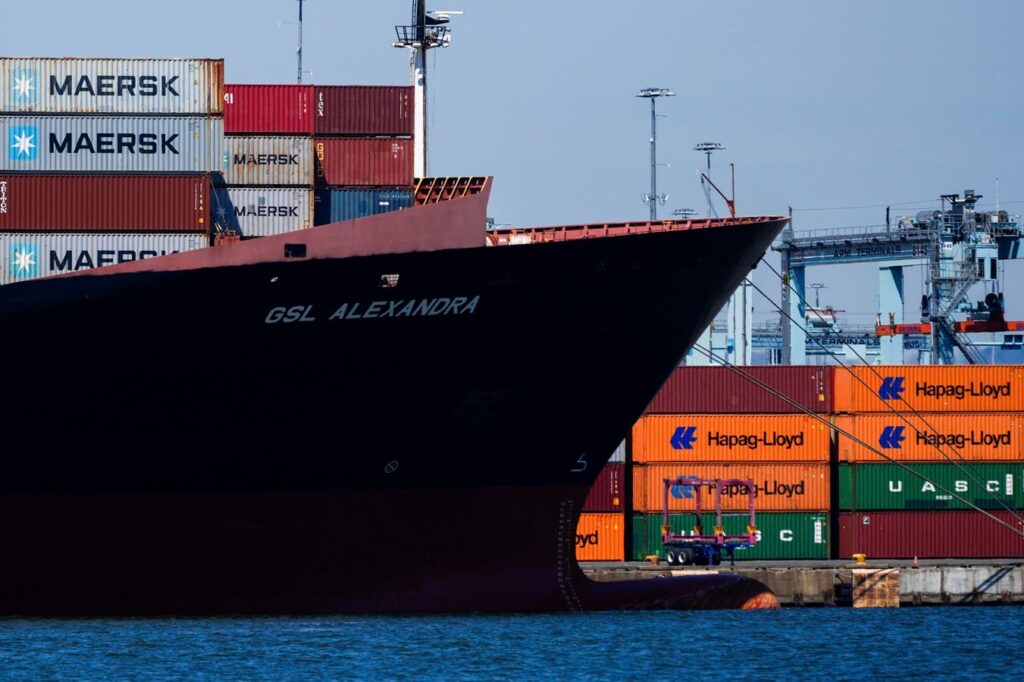In a world of instant communications and consumer expectations of same-day delivery of goods, it’s easy to overlook how much time in advance is necessary to enable speed and convenience.
President Donald Trump imposed a series of increased tariffs on goods from China, which, in turn, imposed higher tariffs on goods from the U.S. This isn’t an abstract issue but one that is already in effect and will create a waterfall of additional domestic consequences.
How Products Get From Ports To Customers
China has been the third-largest trading partner of the U.S. and the third-largest source of imports here so far in 2025, according to data from the Bureau of Economic Analysis, specifically Exhibit 14. U.S. Trade in Goods by Selected Countries and Areas: 2025. About $73.2 billion has come in through March compared to $83.3 billion from Mexico and $73.3 billion from Canada.
However, China is a source of many commodity products, materials, and components. Comparing dollar values of imports among the nation’s top three trading partners doesn’t communicate the physical volume.
The top 10 ports in the U.S. handled 51,295,032 TEUs (20-foot equivalent units, a standard measure of shipment capacity based on containers) in 2024, according to shipping software vendor Upply. This isn’t nearly all from China and includes both imports and exports, but it gives some sense of how large the physical component of traffic is, and China represents a significant portion.
Containers of goods then travel to manufacturers, retailers, wholesalers, and others. Trains and trucks bring the containers out of the ports and to intermediate warehouses or their ultimate destinations across the country.
Many people work in transportation, warehousing, and shipping. Warehouses lease space to companies. Large blocks of goods get broken down into smaller and smaller amounts until they land in whatever space holds them until they are sold to consumers or businesses. Almost 6.8 million people in March 2025 worked in the transportation and warehousing sector according to Bureau of Labor Statistics data.
Then there is all the property devoted to warehousing. As Forbes contributor Steve Banker wrote last year, there are no accurate counts of the number of warehouses in the U.S. The best estimate he could come up with was about 725,000 warehouses, however, the number depends on old data from the Department of Energy. For simplicity’s sake, there are hundreds of thousands whose owners employ workers, spend money on goods and services, and pay taxes.
When The Shipments Slow
The shipping information is important because it helps explain why it takes goods coming from China between one and two months to arrive at their destinations. The initial sea voyage is easily 30 days and can be more depending on the port’s location. The overland transportation then adds even more time. If there is a disruption in the flow of containers from China, it would take at least a month for that to become obvious.
U.S. importers are faced with price shocks. Their costs have effectively doubled, as they have to pay tariffs that are 145% of the cost of goods. So, the importers are now paying almost one-and-a-half times more for what they ordered, with the 145% going to the U.S. government. Some are looking to put goods into bonded warehouses that can put off tariff payments by up to five years. Many are cancelling orders if they can.
Container shipping market intelligence firm LINERLYTICA estimates that China’s container bookings — the reservations to get space on freighters for shipments — are down 30% to 60% for the next few weeks. The National Retail Federation expects that, as things stand, imports during the second half of 2025 will be down at least 20% year-over-year, though that isn’t just from China but also Canada and Mexico.
“At this point, retailers are expected to pull back and rely on built-up inventories, at least long enough to see what will happen next,” NRF Vice President for Supply Chain and Customs Policy Jonathan Gold said in prepared remarks.
President Donald Trump has claimed the U.S. and China were involved in active negotiations; however, China has said there are no such negotiations and that for any to start, the U.S. would have to drop its unilateral tariffs, reported ABC News.
Unless things change, a lot of businesses will drastically slow in mid-May, which would likely lead to layoffs across many industries that depend on imports from China.
Read the full article here


